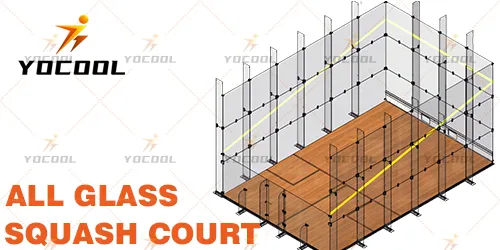

The Rise of Paddle Tennis Racquets A Glimpse into the Manufacturing Process
Paddle tennis, sometimes referred to as platform tennis, is a thrilling sport that combines elements of tennis and squash. As its popularity has surged over the last decade, so has the demand for high-quality paddle tennis racquets. Behind every successful match is a well-designed racquet, and the journey from concept to production unfolds in paddle tennis racquets factories, which have become pivotal in shaping the game.
Understanding Paddle Tennis
Before delving into the manufacturing process, it's essential to understand what sets paddle tennis apart. Played on a smaller court with solid paddles and a depressurized tennis ball, the game focuses on strategy and skill rather than sheer power. The racquet itself must be lightweight, durable, and provide excellent control and maneuverability, making its design and construction a critical factor for players.
The Design Process
The first step in creating a paddle tennis racquet begins with design. Manufacturers often use computer-aided design (CAD) software to prototype their concepts. This design phase allows engineers and designers to experiment with various shapes, sizes, and materials. The goal is to achieve an optimal balance of weight, stiffness, and grip, which ultimately affects performance on the court. Ergonomics plays a crucial role here; a racquet must not only feel good in the hand but also allow for various grip styles.
Material Selection
Once the design is finalized, the next stage involves selecting materials. Paddle tennis racquets are typically crafted from a combination of materials including carbon fiber, fiberglass, and foam.
- Carbon Fiber Known for its lightweight and high strength, carbon fiber is a popular choice for premium racquets. It provides excellent stiffness-to-weight ratios, allowing players to hit powerful shots without tiring quickly.
- Fiberglass Often used in more affordable models, fiberglass offers good durability and is slightly heavier than carbon fiber
. It is also more forgiving in terms of shock absorption, making it suitable for beginners.- Foam The core of the racquet, often made from EVA foam or similar materials, significantly impacts the racquet’s bounce and feel. A denser foam can provide more power and control, while softer foam is better for comfort and shock absorption.

Manufacturing Techniques
Once materials are sourced, the manufacturing process begins. Most paddle tennis racquets are produced using one of two primary techniques molding or vacuum infusion.
1. Molding This traditional method involves creating a mold of the racquet shape. Layers of carbon fiber or fiberglass are placed into the mold, and resin is applied to bind them together. The entire assembly is then heated, allowing the materials to cure and harden into the final shape.
2. Vacuum Infusion A newer technology that allows for a more controlled material application. In this process, a vacuum is used to pull resin through the layers of reinforced materials. This method ensures more uniform distribution of resin, reducing waste and increasing the strength and quality of the finished product.
Quality Control
Quality control is a crucial aspect of manufacturing paddle tennis racquets. Each batch undergoes rigorous testing to ensure that the racquets meet performance and safety standards. This process includes checking the weight, balance, and structural integrity of the racquets. Advanced testing equipment is often utilized to measure the racquets' responsiveness, giving manufacturers the data they need to make necessary adjustments.
Packaging and Distribution
After passing quality control, the racquets are carefully packaged to prevent damage during shipping. Packaging is designed not only to protect the racquet but also to attract customers. Manufacturers often collaborate with marketing experts to create appealing designs that reflect their brand identity.
Once packaged, the racquets are distributed to retailers and online platforms worldwide. The growth of e-commerce has significantly impacted the way paddle tennis equipment is marketed and sold, allowing players to easily access the latest models from the comfort of their homes.
Conclusion
The emergence of paddle tennis as a popular recreational and competitive sport has prompted a significant evolution in racquet production. From innovative design and material selection to advanced manufacturing techniques and quality control, the process behind paddle tennis racquet production is a blend of science, craftsmanship, and artistry. As the sport continues to grow, so too will the factories that fuel its growth, constantly pushing the boundaries of what is possible in racquet technology and design. With every racquet made, players are equipped to improve their game and enjoy the exhilarating sport of paddle tennis.
High-Performance Industrial Flooring Solutions China Paddle Tennis Court for Sale
High-Performance Industrial Flooring Solutions Durable & Cost-Effective
Homogeneous Transparent Floor – Durable & Stylish Rubber Floor Solutions
Premium Homogeneous Transparent Floor for Durable & Stylish Spaces Rubber Floor Solutions
Premium Sports Floor Solutions Durable PVC Sports Floor & Rubber Floor for Gyms
Durable Rubber Composite Floor Premium Rubber Floor & Mats Solutions